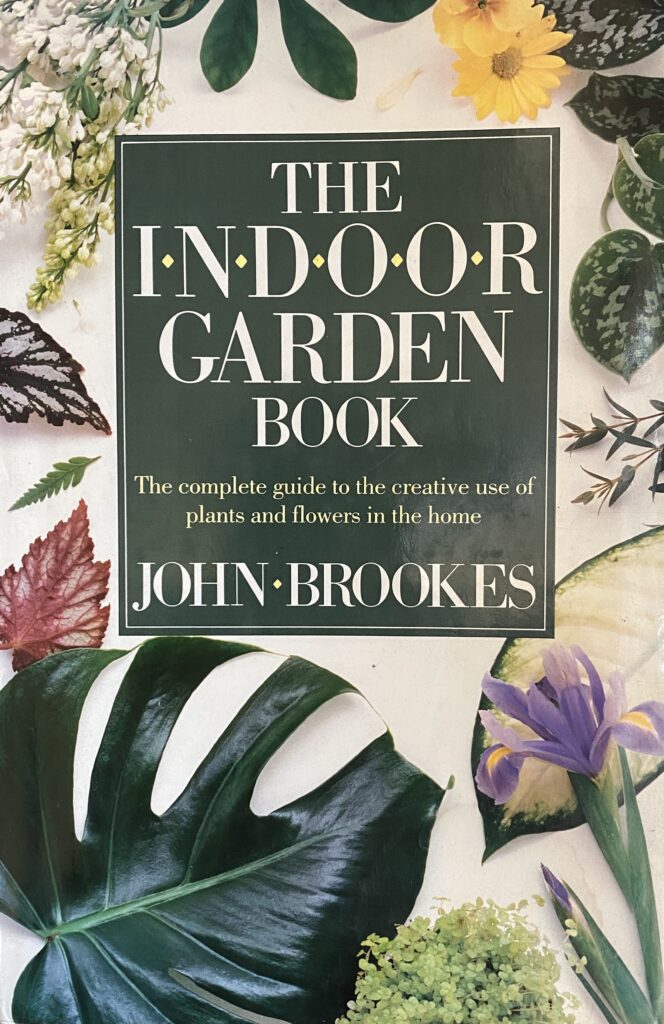Ahead of her talk at the Houseplant Festival on 23 October, the following is an extract from Catherine Horwood’s book ‘Potted History: How Houseplants Took Over Our Homes’:

House plants are big business: in the UK alone, the indoor house plant and flower market in 2018 was worth £2.2 billion. While high figures for flowers might not be a surprise, it is the increase in house plant sales that is causing a stir in the horticultural industry. Little wonder the Financial Times and other broadsheet newspapers began to take an interest with articles such as ‘Houseplants enjoy a growth spurt in popularity’, ‘House plants: the new bloom economy’ and ‘The One Thing Millennials Haven’t Killed is Houseplants’.
Fashions in house plants always been on the move. Their popularity has waxed and waned over the centuries. In today’s disposable society, plants brought indoors, especially flowering plants, are often seen as disposables, to be thrown away as soon as they have faded. This is mainly because they have become so relatively cheap thanks to advances in micropropagation which in turn have led to dramatic price reductions.

If plants are to survive in the modern, centrally heated home, they must meet simple care conditions which rules out many interesting exotics. While traditional garden centres have lagged behind in promoting indoor plant sales, the growth area has been in online sales. Specialist companies such as Hortology and Patch in the UK and The Sill in the US have done well tapping into this market. In 2018, The Sill sold over 100,000 plants to North American millennials. Patch had even greater success in the UK that year with 120,000 houseplants going into British homes. Freddie Blackett started the business in 2015 aiming at young buyers with little or no experience of indoor gardening. All plants are marketed with reassuring friendly names such as ‘Chaz the Swiss Cheese Plant’ and ‘Suzie the Snake Plant’. No botanical names to scare off the buyers, this is the top end of instant interior plant design with helpful simplified care instructions.
As we enter the 2020s, one particular factor, unconnected with horticulture, has influenced indoor plant sales: lack of outdoor space for the millennial generation. Few are lucky enough to live in a property with a balcony let alone a garden. But the desire to bring a touch of the outdoors inside is strong. And one of the biggest drivers of the resurgence of interest in house plants was the arrival of the social media website Pinterest in January 2010 followed in October that year by Instagram. As of May 2019, this photo-sharing website had 1 billion registered users.

It is not difficult to see why indoor plants have become phenomenally popular among a generation of millennials who regularly share images of their food and their pets. In the same vein, house plants are easy to photograph with a mobile phone. As horticultural journalist and former gardening editor of The Guardian, Jane Perrone points out, ‘a variegated leaf looks good in a square more so than a border full of plants outside.’
A fanatical indoor plant collector herself since childhood, Perrone, started a podcast, On the Ledge, in early 2017. Within three years, it has become one of the most popular UK podcasts in the ‘home and garden’ category drawing in listeners from across the world with the US leading the way drawing in listeners who are anxious to learn more about the plants in their care. Specialist topics range from terrariums – growing plants in glass containers, a revival from Victorian times though often sold with totally unsuitable succulents – to new crazes such as kokedama, the art of growing small plants in balls of moss, to aquascaping, a niche branch of aquarium-keeping that focuses on the artistic growing of underwater plants rather than the fish.
While there is an also ever-increasing number of house plant fan pages on Facebook, it is Instagram that is awash with style ‘influencers’ such as such as Jamie Song and James Wong in the UK, Darryl Cheng in Canada, and Hilton Carter and Summer Rayne Oakes in the US, who have hundreds of thousands of followers. These are big names in the publishing industry as well while dozens of books, both practical and ‘coffee table’, are being published every year.
All this has naturally helped increase sales of house plants. With images of popular plants such as Monstera deliciosa (Swiss Cheese Plant), varieties of Alocasia (Elephant’s ears) and Calathea (Prayer plant) constantly available on social media platforms from around the world, it is no surprise that the RHS found that these varieties were their best-selling houseplants in 2019. Sales of Alocasia, particularly the dramatic Alocasia zebrina, rocketed to ten times the previous year’s figure while an astonishing 1,300+ Calathea also sold at their Wisley Plant Centre.
There has been one casualty: the Saintpaulia & Houseplant Society no longer exists probably due to its aging membership profile and lack of internet presence. That is not to say that plant societies that include plants grown indoors are disappearing. Both the British Streptocarpus Society and the British Cactus and Succulent Society are flourishing; the latter has over 100 regional groups. However, it is social media – Instagram, Facebook and Pinterest in particular – that have opened up world-wide opportunities for sharing knowledge that were inconceivable even fifteen years ago.
—